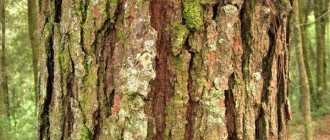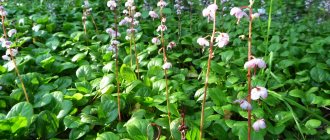Description of the plant
The leaves of the sycamore maple have the greatest list of healing qualities. These trees are common in Eastern Europe and Central Asia, but can also grow further north - in Karelia. They bloom in April-May and are excellent honey plants. Some trees are up to 200 years old. During this time they manage to grow up to 30 meters in height.
Maple leaves contain:
- tannins;
- ascorbic acid;
- vitamin E, B vitamins;
- organic acids: acetic, succinic, phthalic, salicylic, gallic;
- nitrogen-containing compounds;
- flavonoids;
- anthocyanins;
- fatty acid;
- lipids;
- traces of alkaloids;
- carbohydrates;
- aldehydes.
But the chemical composition of the plant has not been fully studied.
Maple leaves - medicinal properties, indications for use, recipes
Many of us eat various greens, but we have not tried maple leaves, the medicinal properties of which were used by the Indians. But in vain - they have unique healing properties, which we will talk about below.
Read also: Dangerous poisonous plants you didn’t know about
The entire world of plants around us is a natural storehouse for maintaining good health and life without disease. Such a beautiful tree as maple is no exception.
In folk medicine, almost all parts of the maple tree are used: leaves, bark, seeds, swollen buds. The only exception is that the blossoming buds do not contain healing powers, and there is no point in using them for medicinal purposes.
Beneficial properties of maple leaves
Maple leaves contain many useful components:
- Ascorbic acid normalizes blood pressure and the blood supply system, removes toxins, promotes skin regeneration at the cellular level, tones the entire body, and helps survive the cold season.
- B vitamins normalize high or low blood pressure, stabilize the pulse, strengthen the walls of blood vessels and maintain their elasticity, and prevent the formation of cholesterol plaques. In addition, B vitamins improve the condition of blood vessels in the heart and brain and prevent allergic reactions.
- Vitamin E helps improve the functioning of the reproductive system, speed up wound healing, and prevent blood clots.
- Tannins are an important component for normalizing intestinal function and eliminating the symptoms and consequences of food poisoning.
- Carotene helps the body accumulate oxygen in cells, improve skin condition and remove toxic substances from the body.
- Fiber is necessary for the body for normal intestinal function, the formation of beneficial microflora, and normalization of metabolism.
- Lipids are responsible for the synthesis of hormones.
These components determine the beneficial properties of maple leaves:
- tonic;
- general strengthening;
- astringents;
- anti-inflammatory;
- sweatshops;
- choleretic;
- diuretics;
- antiseptic;
- antipyretic.
Use in folk medicine
Maple leaves have long been used to treat joint pathologies . Although official medicine does not recognize this method, it has been tried and tested by generations of people. With regular use of a decoction of the leaves, inflammatory processes in the joints are muffled and salt crystals are removed. In addition, this technique is an excellent prevention against high cholesterol.
To consolidate the effect of treatment, it must be combined with a special diet and walks.
Treatment of ailments requires a thoughtful approach and a separately prepared decoction, tincture or preparations based on maple foliage:
- Painful manifestations of arthritis, arthrosis, osteochondrosis were cured as follows: pour 3 dry leaves with a glass of boiling water and wait until the liquid cools down. Take half a glass 15 minutes before meals.
- Due to the high content of vitamin C, fresh or dried leaves can be chewed for the treatment and prevention of scurvy and periodontal disease.
- Crushed fresh leaves are used to heal wounds, relieve swelling and eliminate muscle pain First, the wound is treated with an antiseptic, after which the paste from the leaves is wrapped in gauze or linen cloth and applied to the sore spot, changing the compress several times a day. In addition, this compress has an antibacterial effect.
- For radiculitis, an alcohol tincture is prepared: a tablespoon of finely chopped leaves is poured with 100 ml of vodka and infused for 4-6 days. You need to take 30 drops daily, dropping them into water. In parallel with oral administration, it is recommended to rub the affected areas.
- For stomach pain, healers make a decoction: take 0.5 tablespoons of dry and fresh leaves and brew with a glass of boiling water. Infuse and take two tablespoons before meals. The same decoction is prescribed as an antiviral, tonic, and antiemetic drug. It is recommended to take it for cholelithiasis and kidney diseases. Also used to rinse the mouth and throat for sore throat, colds, and herpes.
- For prostatitis, a tincture of fresh maple leaves can help : pass clean and dried raw materials through a meat grinder and squeeze out half a glass of juice. Add 30 ml of pure alcohol to the juice and take 5-7 drops three times a day before meals. It is better to coordinate the course of treatment with your doctor.
- Preparations from maple leaves are recommended for the treatment of gastric ulcers and inflamed intestines. For these diseases, it is also recommended to consume capers, which help the body neutralize the oxidative effect of digesting heavy foods.
- Fresh steamed leaves are applied to boils . To do this, several leaves need to be placed in hot water, taken out, applied to the sore spot and isolated from the bandage with a piece of polyethylene.
- Tea made from prepared raw materials has a pronounced anti-rheumatoid effect . Thanks to the high concentration of analgesic components, an analgesic effect is achieved and joint mobility is restored.
Helpful information
Maple, like oak, can be used almost completely . The bark, stems, flowers, and fruits are also used for treatment. Maple sap and maple syrup are healthy but rare drinks. Maple syrup is used in cooking, as a component of various dishes or a sugar substitute, and is also used as a vitamin and medicinal drink.
Herbalists prepare the raw materials themselves and make fermented tea. Brew it like regular tea and drink it with honey or simply as a separate drink. For taste and benefit, you can add: leaves of apple, cherry, chokeberry, strawberry or strawberry, black currant. If you serve healing honey from kandyk with tea, the drink will become just a vitamin bomb.
Maple foliage has also found its use in cooking. In Japan, they are deep fried to create an exotic golden snack. The beautiful shape of the leaves is often used to make cookies, gingerbread cookies and painted gingerbread cookies. Although in terms of the number of healthy dishes, maple is unlikely to beat cabbage.
Preparation and use of maple oil
Some types of maple (sugar, red and black) are industrially produced into maple syrup, from which oil is then prepared. To prepare the syrup, maple sap is collected in the spring - small holes are made in tree trunks through which the liquid flows into a container. From 30 liters of maple sap, only 1 liter of syrup comes out: for this, the juice is evaporated for several hours.
Maple butter is actually heat-condensed maple sap and contains no added dairy or artificial ingredients. It has a creamy consistency and a beige-milky color. Maple oil is extremely popular in Canada - the product is used for baking, sweet desserts, and is used to grease pancakes, waffles, and bread.
How to prepare and store maple leaves
Of course, improperly harvested maple leaves will not cause harm to the body, but in order for them to bring the expected benefits, they must be collected and dried according to the rules:
- Collected in the first half of summer, until the young leaves become tough and acquire coarse veins.
- The leaves should be easily rubbed between your fingers and exude a pleasant herbaceous aroma.
- You should not procure raw materials within large cities or near operating enterprises. The best gathering place is large forested areas.
- You should not remove all the foliage from one tree.
- The collected raw materials must be sorted out, fragments damaged by pests or diseases must be removed and washed in running water.
- There are two ways to dry: the first is to spread the raw materials on paper, the second is to string the petioles onto a fishing line and hang them to dry.
- In the autumn season, collection is even easier. You just need to wait for the autumn leaves to fall and select whole, undamaged leaves, dry them and store them like ordinary herbs.
Herbalists prepare fermented raw materials to make herbal tea:
- Wash the prepared young leaves and dry them in the sun for several hours;
- roll each leaf between your palms into a tube; if there is a large amount of raw material, it can be rolled through a meat grinder;
- compact the workpieces tightly into a glass jar, place a damp towel on top and close with a lid;
- after 3 weeks, the green mass turns brown and acquires a light fruity aroma;
- it is removed and dried on thick paper;
- Properly prepared raw materials have a pleasant and refined aroma of an elite drink.
- The consistency also resembles good tea - brittle and light leaves of the same size.
- Stored in an enamel container under a lid for up to a year.
Tell us about your experiments in selecting herbal tea components. Have you ever used maple leaves for them?
Rules for procurement of raw materials
For the preparation of medicines, two types of leaves are prepared: green and yellowed. In the first case, the collection is carried out in the spring (before the maples begin to bloom). Select clean leaves without signs of damage by diseases and insects, and tear them off along with the petioles. To make the drying process faster, choose leaves with thin petioles.
The collected leaves are dried in the sun, then transferred under a shed or into the attic, dried with good ventilation. For drying, you can use electric dryers or ovens, but you need to make sure that the temperature is between 50-60 degrees.
In autumn, fallen leaves are collected. You can pick yellow leaves from trees, which are easily separated from the branches. After collection, the leaves are dried in a dry room or in dryers. The dried raw materials are placed in linen or paper bags and stored in a dry place for two years.
When used correctly, maple leaves become an excellent medicine and help prevent the development of many diseases. Thanks to the healing properties of the plant, it is possible to reduce the harmful effects of environmental factors on the body, as well as medications used by official medicine.
Read also: Create a waterfall with your own hands for your summer house











